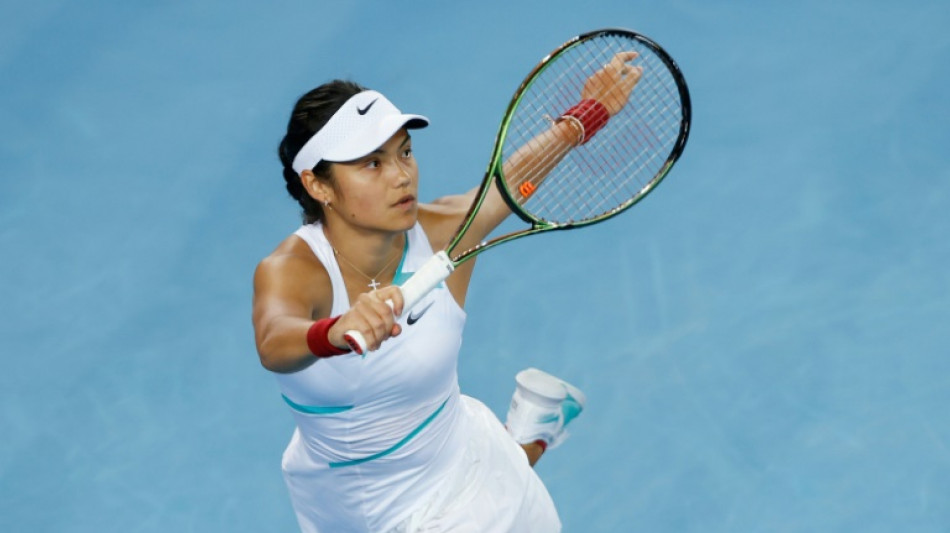

Raducanu 'must absorb lessons' to reach top of women's tennis
Emma Raducanu will reach the top level of women's tennis but first must absorb the lessons from her dizzying rise, says the director of a charity that helped fund her eye-catching journey.
The British player stunned the sport by winning last year's US Open as an 18-year-old qualifier without dropping a set, beating fellow teenager Leylah Fernandez 6-4, 6-3 in the final.
She returned to the Grand Slam arena at the Australian Open on Tuesday, beating former US Open champion Sloane Stephens 6-0, 2-6, 6-1 despite testing positive for coronavirus a few weeks ago.
The victory in Melbourne was a much-needed confidence boost after a disappointing set of results since her triumph in New York.
Raducanu benefited from funding from Tennis First, an organisation set up in 1999 to help young players on the pathway to professional tennis.
Ken Weatherley, the charity's director, is in no doubt that 18th-ranked Raducanu has the tools to be one of the world's top players but says she faces challenges adjusting to life on tour.
"She will be a top player in my opinion because she has all the attributes, but who knows?" he told AFP.
"She may get injured. But my expectation is that her ranking will fall to perhaps below 50 while she absorbs all the lessons she needs to absorb on the professional tour."
He added: "Emma is 19 now and one of the things that she will have to deal with is being on the road and she will live I expect a different existence because she has been at school until recently."
Weatherley describes Raducanu's astonishing run in New York last year as "mega-exceptional" but points out that she had a relatively kind draw at Flushing Meadows.
"It would be foolhardy of anybody to think she could maintain that kind of level right away because she hardly played tennis before Wimbledon last year because of Covid and she's not the finished article by any means," he said.
- Tennis First -
The aim of Tennis First is to help young players in Britain who have the attributes and mindset required to reach a world ranking of 250 and higher.
Weatherley said talent can stand out but it is more difficult to assess whether a player has all the other key ingredients to make it to the top.
"In the first instance, it's not difficult sometimes to see that someone like Jack Draper (a British player ranked 213 on the men's ATP Tour) or Emma Raducanu have got ability, exceptional hand-eye coordination for instance," he said.
"What is more difficult is to get behind what the player is like and what their mental and physical attributes are and what happens on their journey. Lots of people have injuries which stop them fulfilling their potential.
"It's much more difficult to see what's in their head and at the highest level you have to have a very good tennis brain."
Weatherley says the expectations of the British public are higher than they ought to be, buoyed by the success of three-time Grand Slam winner Andy Murray.
He points out the relatively small number of players, the lack of facilities and competition from other sports such as cricket.
"France produces maybe 10 times as many good players, top-100 players, or something like that, and it's a reflection of how many people play the game at grassroots' level," he said.
Weatherley said it was difficult to assess the impact of Raducanu's success on British tennis yet but pointed to an uptick in the number of players who took up the sport during the coronavirus lockdown.
"One of the things that happened because of lockdown and Covid was there was a rush of new people to play tennis and that was because it was one of the only forms of exercise you could take because it was outdoors," he said.
"I'm sure there are a lot of children who watched that (Raducanu's US Open win) and having seen what's happened to her will be persuaded to play tennis. Whether they stay or not is a much longer-term question."
J.Fuchs--HHA



